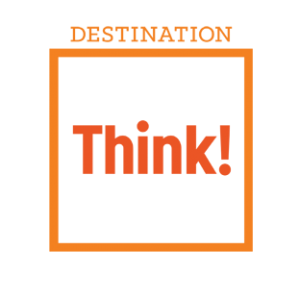July 2007
The Archives
-
Marketing
How to use DM to destroy your brand
We used SkillPath Seminars to train one of the members of my unit a while back. Since then, we have been bombarded with DM pieces; all hard-copy, almost all irrelevant to our needs. I’m guessing 2 or 3 pieces a week. When I received the one in the picture below I had enough of this complete waste paper (and my time).
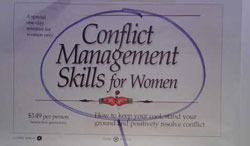
I sent the following email to SkillPath:To whom this may concern,Please remove me from your Direct Mail list. The volume of irrelevant
communications is beyond all proportion. This is a complete waste of
paper and has destroyed your brand for me. Have you ever heard of email
marketing?Preferred Customer #: *********
VIP #:***********Sincerely,
William Bakker
Director E-BusinessI received the following reply the next day:
William,I have made the requested changes to our mailing list. I do want to let you know that our brochures are preprinted
and you may continue to receive these until the preprinted supply is exhausted. This may take
3-4 months depending on the volume of mail received. I apologize for the inconvenience. If there is anything else I
can help you with, please let me know.Thank you,
[Name]
e-care Coordinator
SkillPath/CompuMaster/HRCSkillPath’s solution to this customer service issue is to keep sending stuff for 3 or 4 months to an already annoyed customer. What a perfect way to destroy your brand.
-
Links
Week in Links
A lot of old business models aren’t working anymore. The music industry is a good example. Prince is a great example of somebody who embraced the new reality and created an effective new business model. [The Once and Future Prince – NY Times]
Chip Health, a professor at Stanford Business School, explains about conventional wisdom and how to ideas stick. [IT Conversations]
“Hotmap shows where people have looked at when using Virtual Earth.” [MS research – Hotmap]
“Call it the 105% Rule. From a word-of-mouth perspective, it’s virtually impossible to discuss an experience that is 5% better than the norm on all dimensions. People don’t talk like mystery shoppers, reporting diligently on each relevant feature. People talk about the exceptions, the unexpected, the highlights.” [Fastcompany – Give ’em Something to Talk About]
A second screening in Vancouver for the documentary Helvetica has been announced. Fonts and type is a bit of a low-engagement hobby and I’m looking forward to it. [Helvetica Film Website], [get tickets here]
Sheryl Sandberg leads Google’s advertising business. One of the best content I’ve seen in a 10 minute presentation. About the old advertising ‘interuption’ model: “It’s goal wasn’t to be useful to the user, it’s goal was to get the advertiser your attention, even at your own expense.” About Google’s advertising model “We wanted to our ads to be as useful as our search results”. [Supernova Conference]
And for fun. The best YouTube video I’ve seen this week.
-
tourism bc
Job opening at Tourism BC
Are you passionate/obsessed with the internet? Do you think about the user first in any online deliverable? Do you always want to make things better? Do you know how to use analytics to drive results? Do you know Search Engine Marketing? Are you agile and do you believe that team=product? Then we want to talk to you! Check out this job posting for our online marketing specialist.
-
Links
Week in Links
The best stuff I encountered online this week.
The fascinating BBC4 4 series documentary The Century Of the Self examines the rise of consumerism, advertising and Public Relations in the 20th century, starting with Freud’s psychoanalysis.
Episode 1
Episode 2
Episode 3
Episode 4How Seagate learned to package like Apple. Opening a product package should be an experience onto itself. Apple gets it, others are starting to follow.
Google sponsored a project in the Master’s program at Carnegie Mellon University’s Human-Computer Interaction Institute to rethink and reinvent online social networking. This is the next phase of social networking.
-
Internet
Book Review: Everything Is Miscellaneous: The Power of the New Digital Disorder
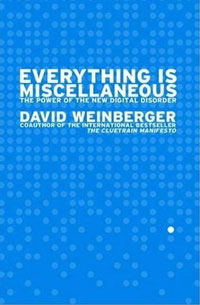
I attended Dr. David Weinberger’s keynote presentation (22MB, PPT) at the Information Architecture summit in Vancouver last year. It was a preview of his Everything Is Miscellaneous book. The presenation was very inspiring and thought provoking so I was looking forward to the release of his book. And I wasn’t disappointed. I expected a book about Information Architecture (a passion of mine) and library science, but it provided much more.
The theme of this book is that in the 3rd order of information (digital), the constraints for categorizing information in a single structured way has become irrelevant. In the digital order, information can be placed in many places, often without the need for any categories. Information is democratized, and conventional experts are replaced with the wisdom of crowds; no longer is information pre-filtered by editorial boards, but post-filtered by the users of the information, by their own definitions of authority.
The book provides the reader the history of cataloging knowledge, starting with Aristotle, analyzes traditional authorities like the Dewy Decimal system, all the way to the current folksonomies. New ways of managing and retrieving information and knowledge are challenging the conventional wisdom that everything in the world can and should be neatly organized. This new way of thinking is not only applied to knowledge management but can be applied in other areas as well, such as the way organizations are structured.
Dr. Weinberger’s blog is worth subscribing to.
-
Travel & Tourism
More Seoul
Our time here has been very productive.
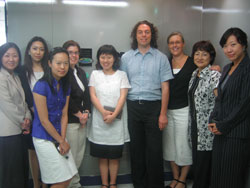
We had good meetings with our Asian marketing team in Seoul.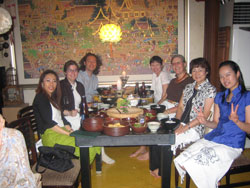
We went to this great vegetarian restaurant for dinner, temple food, created by a former Buddhist monk. It was excellent.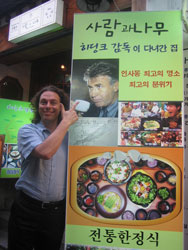
All I have to do is tell people I’m from the same country as Hiddink and they’re my friend.After our full day of meetings we had some time to check out the sights of Seoul. It’s a great city. It’s not intimidating at all. We walked around and I felt at easy everywhere I went. Maybe the fact that I’m a foot taller than the average Korean helps.
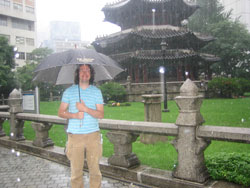
It’s the rainy season so the day started with an insane downpour. So we changed our plans to walk around and hopped into a cab to go to a museum.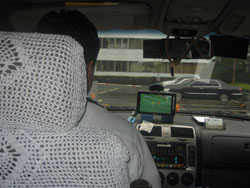
Our taxi driver was watching TV while driving! But it was a soccer game, Korea – Brazil in the Fifa U-20, held in Canada right now. It was the end of the game and Korea lost.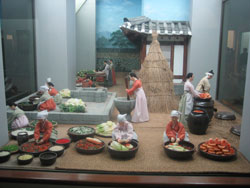
We went to the National Folk Museum where we learned about Korean history and customs throughout the ages. Including all about Kimchi.Above is the process of creating this famous, and delicious dish.
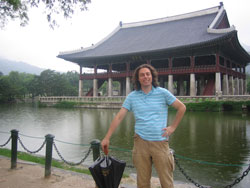
The rain had passed when we went back out and we explored the sights of Geyeongbokgung, the former royal palace.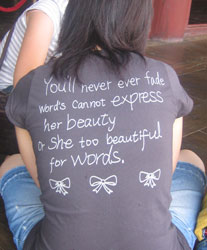
I love the English that’s just a bit off you see everywhere (not that my English is much better).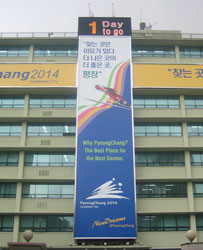
Today, the city to host the 2014 Olympics will be announced. Korea is in the running. I know how they feel right now. UPDATE: Russia hosts the 2014 Olympics, sorry Korea.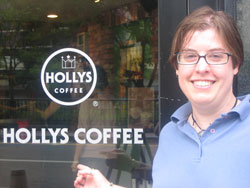
Holly used the opportunity to check up on one of her Coffee House franchisees.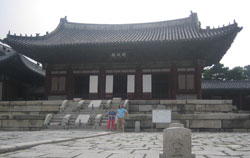
We walked across town and visited the Jongmyo shrine, Changgyeonggung Palace and Changdeokgung Palace, all very impressive.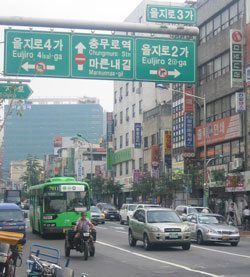
So you can’t turn left, can’t turn right and can’t go straight. Where can you go? O wait, nowhere, it’s a one way street in the opposite direction! -
tourism bc, Travel & Tourism
Seoul
I’m in Seoul to meet our Asian teams about the future of our Japanese, Korean and Taiwanese websites. It’s my first time in Seoul and it’s a very cool city to visit.
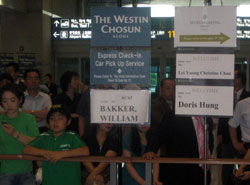
I’ve always wanted to have a sign waiting for me on arrival!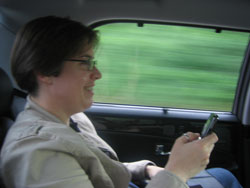
Holly started taking pictures during our hour long hour taxi ride to the hotel.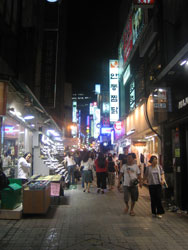
We’ve only been here a few hours, we walked around the hip shopping area. Complete crazyness. Every store has a young and hip person with a speakers trying to get people into the store.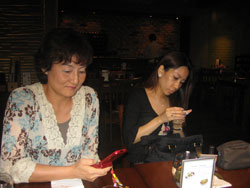
Tomoko from our Japanese office and Christine from Taiwain firing up their cell phones to explain to me how they can text, using 50+ characters on 12 keys. I get it now.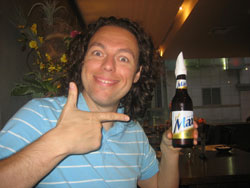
And of course I had to drink our Korean project beer Hite.

